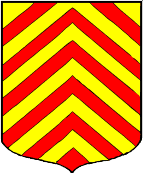In the year 977, the village of Egmond aan Zee is said to have sprung up behind the dunes. The story goes that one Walgerus, a gentleman farmer from Egmond-Binnen is said to have built ten houses for a number of poor families. These were allowed to live there for nothing and had the right to fish in the sea on the condition that they did cede to the abbey at Egmond-Binnen ten percent of their catch. He is also said to have founded the little church that is now the current Old Catholic St. Mary’s Church. Agnes church is. He is said to have built the little church in honor of Saint Agnes.
Egmond aan Zee then developed into a real fishing village. Around the year 1400, the so-called Pinck, a flat-bottomed vessel measuring about 5.5 by 2.5 meters, came into being. The small ship was built overnaad with a completely flat bottom, so it could be transported to the beach on rollers from the barge shed.
Due to coastal erosion, fifty houses of Egmond aan Zee disappeared into the sea during the All Saints Flood on November 1, 1570. In the Christmas storm of November 1741, 36 houses and the church with tower were swallowed by the sea.
Egmond aan Zee was an independent municipality until July 1, 1978, when it was merged with the municipality of Egmond-Binnen to form Egmond. Since January 1, 2001, the municipality of Egmond merged with the municipalities of Schoorl and Bergen to form the municipality of Bergen.
The J.C.J. van Speijk lighthouse is a lighthouse on the North Sea coast near Egmond aan Zee. The J.C.J. van Speijktoren is one of the oldest active lighthouses in the Netherlands. The base of the lighthouse forms an imposing tomb commemorating Lieutenant Commander Jan van Speijk.
The sea at Egmond could, and still can, be very treacherous. Therefore, two lighthouses designed by Jan Valk were built in between 1833 and 1834. After the construction of the North Sea Canal in 1876 and the construction of the two lighthouses in IJmuiden, the lighthouses in Egmond, to avoid confusion, were fitted with red panes so that the light emitted could be distinguished in color from that of IJmuiden. In 1891, the J.C.J. van Speijk lighthouse was equipped with a rotating light. The south tower on the Torensduin was extinguished that same year and demolished in 1915.
In 1922, the light house was rebuilt as the tower received electric light. The balustrade was then cast in concrete. The design for this renovation was by Otto Jelsma. In 1967, the guardhouse was built. The north side of the light is red in color to warn of dangerous shallows north of Egmond. As soon as ships leave this danger zone, the light turns white again.
Source: Wikipedia








